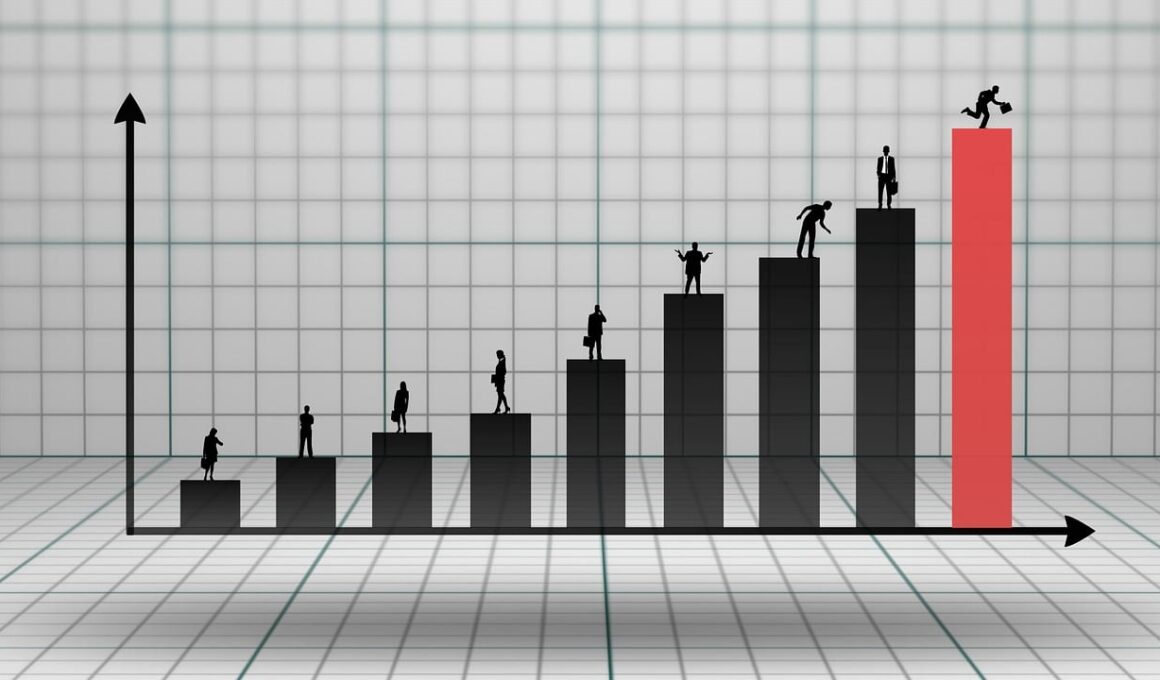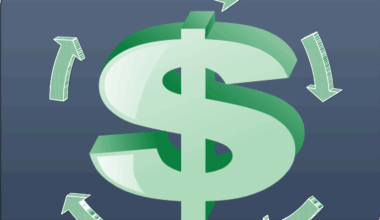Dynamic Econometric Models for Economic Growth Analysis
Dynamic econometric models play a crucial role in understanding the complexities of economic growth. They allow researchers to analyze relationships between various economic variables over time. By using time-series data, these models capture both short-term fluctuations and long-term trends effectively. The incorporation of lagged variables helps in understanding the impact of past events on current economic conditions. Furthermore, these models can be implemented to forecast future economic growth, enabling policymakers to devise better strategies. A robust dynamic econometric model includes various techniques, such as vector autoregressions (VAR) and vector error correction models (VECM). These techniques aid in examining how different sectors of the economy interact and respond to structural changes. Researchers need to select the appropriate model based on the specific economic question at hand. The use of these models provides significant insights into how government policies influence economic performance. Ultimately, dynamic econometric models are essential tools for economists aiming to achieve sustainable economic growth and ensure effective policy formulation.
Understanding the theoretical foundation of dynamic econometric models is vital for accurate application. Essential concepts such as stationarity and non-stationarity need to be addressed effectively. A time series is stationary if its statistical properties do not change over time, which is crucial for reliable model estimation. Non-stationary data can lead to spurious regression results that may mislead economic analysis. As a result, transformations such as differencing or logarithmic adjustments are often necessary before analysis. Testing methods like the Augmented Dickey-Fuller (ADF) test help determine the presence of unit roots in data series, guiding researchers in model selection. Moreover, incorporating structural breaks enhances model reliability, acknowledging the impact of sudden economic shifts. Dynamic models such as ARIMA, when applied to economic growth analysis, show how different variables lag over time and interact with each other. Therefore, a strong grasp of these concepts is indispensable for econometricians. The evolution of these methodologies continues to empower economists in addressing pressing issues regarding economic growth dynamics and policy implications.
Applications and Implications of Dynamic Models
The application of dynamic econometric models significantly impacts various sectors of the economy. By examining growth rates across different countries, these models provide insights that are crucial for understanding global economic trends. Policymakers utilize the findings from such models to tailor economic policies promoting higher growth rates and social welfare. Additionally, businesses analyze economic indicators to make informed decisions regarding investments and resource allocation. For instance, understanding inflation trends through dynamic models enables companies to adjust their pricing strategies effectively. Education is another critical area where these models find application. Dynamic econometric analyses can guide educational reforms by linking investments in education to long-term economic growth outcomes. Furthermore, these models have implications for environmental economics, assessing how sustainable practices contribute to overall economic performance. As nations face challenges such as climate change, policymakers increasingly rely on these models to shape sustainable economic development agendas. As a result, dynamic econometric models not only support academic research but also have profound real-world implications for society at large.
Conducting proper econometric analyses requires rigorous data collection and statistical evaluation. High-quality data underpins the accuracy and credibility of any econometric analysis. Researchers must ensure that they employ comprehensive datasets that reflect the economic activities they aim to model. Data sources can include national statistics, international databases, or proprietary datasets provided by organizations. Furthermore, effective econometric analysis involves adhering to robust statistical methodologies, addressing potential issues such as multicollinearity, autocorrelation, and heteroskedasticity. Advanced econometric software tools facilitate data handling and analysis, allowing for efficient manipulation of large datasets. Researchers need to validate their models through diagnostic tests to ensure reliability. These tests assess model fit and identify any anomalies in the data. The application of dynamic models necessitates iterative processes of estimation and refinement, aiding in achieving accurate representation of economic phenomena. Knowledge of econometric principles is essential for navigating complex datasets while yielding valid conclusions. Through meticulous data management, economists can enhance the reliability of their findings and contribute valuable insights into economic growth analysis.
Case Studies in Economic Growth Analysis
Numerous case studies demonstrate the effectiveness of dynamic econometric models in analyzing economic growth. For instance, a comparative study between developing and developed nations provides vital insights into varying growth trajectories. By applying dynamic models, researchers found that investments in technology and infrastructure yield differing results based on national contexts. In emerging economies, factors such as capital accumulation and labor market flexibility are more pronounced, while advanced economies show benefits from research and innovation. Another case study focused on the relationship between educational attainment and economic performance in developed countries. The findings highlighted that higher education levels correlate strongly with GDP growth, validating the importance of investing in education. Subsequent analysis utilizing dynamic models further revealed the lagged effects of educational investments on long-term economic conditions. Furthermore, research on environmental policies illustrated how sustainable practices contribute to economic resilience over time. These real-world examples showcase how dynamic econometric models inform comprehensive analyses that guide effective policymaking. Ultimately, combining empirical research with econometric techniques enhances understanding of economic growth complexities.
In conclusion, dynamic econometric models serve as indispensable tools in the analysis of economic growth. Their capacity to assess relationships between variables over time allows researchers and policymakers to derive meaningful conclusions. The theoretical underpinnings of econometrics provide a valuable framework for understanding complex economic dynamics. Additionally, these models help identify causal relationships, aiding in effective policy development. With the continual evolution of econometric techniques, researchers can delve deeper into the underlying factors driving economic growth. As globalization and technology continue to shape economies, the application of dynamic econometric models will only grow in importance. Future research may explore the integration of machine learning techniques into econometric models, enhancing predictive power. Furthermore, addressing emerging challenges, such as economic inequality, will require innovative approaches grounded in sound econometric practices. Ultimately, the interplay between dynamic modeling and economic analysis will pave the way for sustainable growth and development. As economies strive for resilience in an ever-changing landscape, the contributions of dynamic econometric models to economic analysis will remain invaluable and influential.
Future Directions in Econometric Modeling
The future of econometric modeling lies in embracing innovative techniques and technologies. Advancements in data collection through big data and digital tools expand the potential for comprehensive analyses. By leveraging real-time data sources, economists can refine their models, incorporating broader variables and improving their understanding of growth dynamics. Machine learning represents one promising avenue for enhancing econometric modeling capabilities. The integration of machine learning methods can uncover patterns and relationships within datasets that traditional econometric approaches might overlook. As these technologies evolve, they are poised to reshape how economic models are constructed and interpreted. Moreover, considerations of broader economic behaviors should guide future research. For example, behavioral economics provides insights into how psychological factors influence economic decisions, which dynamic models can integrate. By combining insights from various fields, researchers can create more holistic models that address real-world complexities. Furthermore, interdisciplinary collaboration between economists, statisticians, and data scientists will enhance the depth and breadth of econometric analyses, yielding robust frameworks for understanding economic growth. Thus, the future of dynamic econometric models is bright, driven by innovation and collaboration.
Ultimately, the exploration of dynamic econometric models for economic growth analysis highlights their immense potential in guiding economic policy and strategic decision-making. The overarching goal remains to achieve sustainable and equitable economic growth across various sectors while addressing the challenges brought by rapidly changing global dynamics. As models evolve and adapt to incorporate contemporary economic phenomena, their relevance for policymakers cannot be overstated. From analyzing troves of data to providing actionable insights, dynamic econometrics represents a vital facet of economic analysis. Firms and governments alike can harness the potential of these models to shape effective policies that promote growth, increase productivity, and improve social welfare. Continuous research in this area will further enrich economists’ understanding of the interplay between structural elements, allowing for better adaptability in an unpredictable economic landscape. In summary, dynamic econometric models not only illuminate the pathways to economic growth but also serve as pivotal instruments in navigating the complexities of modern economies. Their continued application and refinement will undoubtedly play a crucial role in formulating strategies that lead to long-term prosperity.


